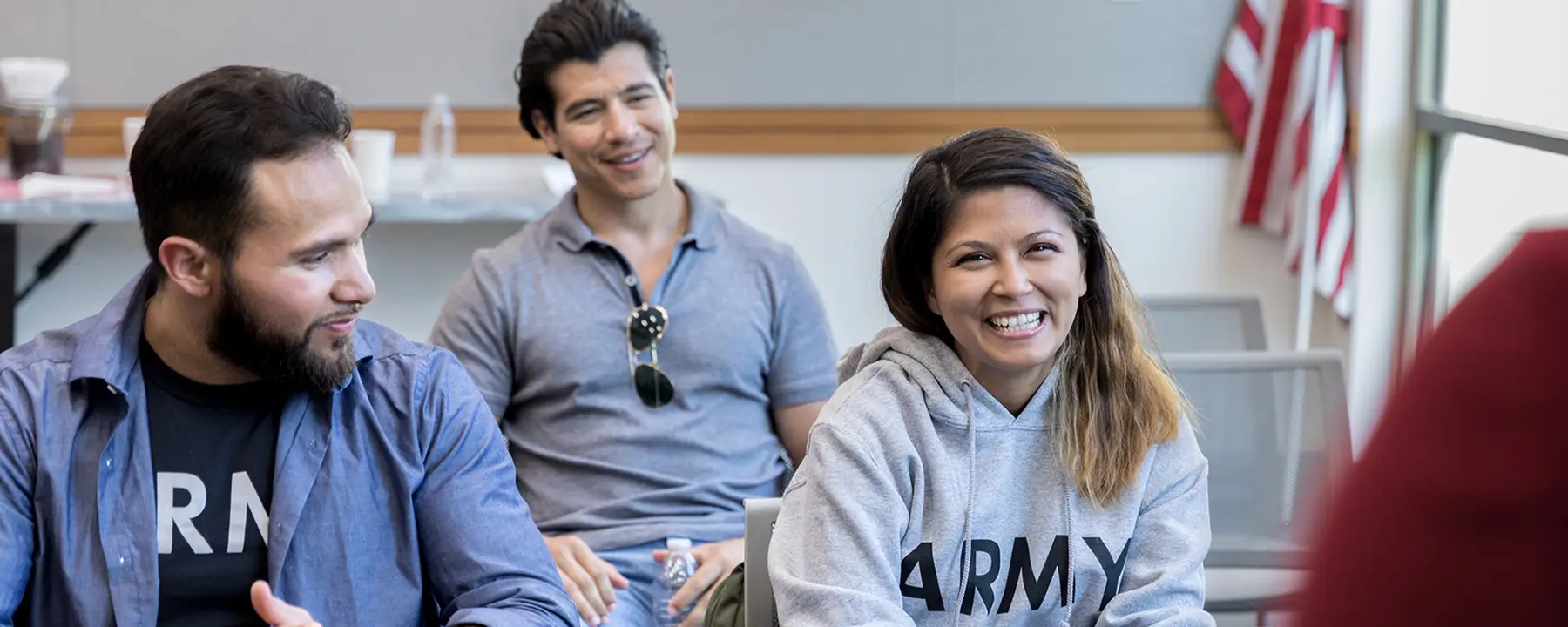Results provide hope for the many service members and veterans suffering from symptoms of Posttraumatic Stress Disorder
Several of the active-duty service members who participated in a clinical trial RTI conducted for the treatment of posttraumatic stress disorder (PTSD) reported crying after the brief procedure.
Not from pain, instead from the immediate relief they felt from the anxiety related to PTSD “like a weight had been lifted,” says RTI’s Kristine Rae Olmsted, the co-primary investigator of the study published this week.
The eight-week clinical trial showed that symptoms of PTSD showed clinically significant improvement for participants after receiving stellate ganglion block (SGB) injections in the neck, above the collar bone.
One participant indicated that, following the SGB, she felt more in control of her emotions. “There was a difference in my mood and thinking pattern—I could concentrate better.”
The stellate ganglion is like a routing center in the nervous system for the fight or flight nervous system, and this trial found that briefly anesthetizing the area effectively treats PTSD symptoms.
“There is this significant proportion of the U.S. population who have agreed to serve—who have stepped up to serve. Frequently, they are put in harm’s way, and they end up having trouble. Now, there is a new way for us to be able to help them conquer PTSD,” Rae Olmsted added. “Not only is this a treatment that could potentially benefit service members and veterans, but it could serve as a new treatment option for first responders and other civilians.”
Drive On
While 10 to 22 percent of service members will suffer from PTSD at any given time, the current treatment options have drawbacks, Rae Olmsted noted.
Psychotherapy, also known as talk therapy, can take a long time to show results, and it requires people to relive some extraordinarily difficult situations—the cause of the PTSD. There is high treatment falloff as a result, she added.
“The medications also take a long time to work, and they can have some pretty extreme side effects,” she noted. “There is an extreme stigma for any type of mental health disorder for service members—people are taught to ‘Suck it up and drive on.’ SGB seems to be a more acceptable treatment to service members because it is viewed as a medical procedure.”
One participant who had severe PTSD related to 4 combat tours indicated that his wife noticed a much calmer temperament in him following SGB. He said, “I wasn’t going off on people for no reason.” His subordinates noticed and commented on his changed mood. He described how much his road rage improved: “I wasn’t chewing soldiers out for running red lights or cutting me off.”
Rae Olmsted and her team began researching SGB in 2012 when COL Sean Mulvaney, Medical Corps, U.S. Army (retired), a study co-investigator, was seeing positive results using the treatment working with Special Forces members grappling with PTSD. But her interest in the causes and potential treatments of PTSD stretches back even further.
“My dad has PTSD from serving in Vietnam,” she noted. “There has always been a part of me that has wondered what is wrong with Dad, and how can we make it better? That is part of what has driven my interest.”

Kristine Rae Olmsted
Opening Doors
Two-thirds of the study participants received two SGB shots, and one-third received two sham injections. Compared to the baseline, at eight weeks after treatment, symptom relief was significantly better for those patients administered SGB. Symptoms improved on average 12.6 points for SGB, compared to 6.1 for sham. A 10-point improvement is generally considered clinically significant.
In addition to studying the effects of the treatment to essentially reboot the fight or flight part of the nervous system, Rae Olmsted and her colleagues also studied whether service members would accept the treatment. SGB takes approximately five minutes to administer and requires those receiving it to remain in a physician’s office for observation for about 20 minutes after the injection.
One participant noted that SGB isn’t a cure for PTSD—that psychotherapy was also necessary. He described SGB as “like a medicine—it’s a helper but you still have to dig into the real issues. It’s not a solution alone.”
Like Novocain in a dentist’s office, the shot has some short-term side effects, such as a droopy or reddened right eye (SGB is almost always done on the right side). But, these diminish after 6 to 12 hours, while the improvements in the PTSD symptoms last longer. While some see improvement with one treatment, others need additional injections.
While SGB has been used for nearly a century to treat chronic pain, this is the first multisite randomized trial for using it to treat PTSD.
“Some people described the treatment as opening a door—some felt significantly less anxious even when they thought about the trauma, so they were then able to do the talk therapy willingly and effectively,” Rae Olmsted noted.
For More Information
Currently, the SGB treatment is offered at a handful of military and VA locations—including Womack Army Medical Center at Fort Bragg, Tripler Army Medical Center in Honolulu, and Landstuhl Regional Medical Center in Germany—and by a study co-investigator, a private practice physician located in Annapolis, Maryland.
Contact the Stellate Ganglion Block Team to Learn More
- United States Army Medical Research and Materiel Command


